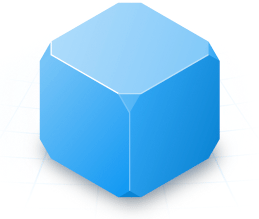The power in the powercube
 The ‘forms of power’ in the powercube (visible, hidden and invisible power) are based on the ‘three faces’ or ‘dimensions’ of power articulated by Stephen Lukes (1974, 2005) and taken further by John Gaventa (1980; 2006) and Lisa VeneKlasen and Valerie Miller (2002). It is tempting perhaps to categorise the powercube as ‘one approach’ to power, and in some respects this is true. But in other respects the powercube does not limit itself to a single idea about power, and is convergent with a range of other approaches – for example:
The ‘forms of power’ in the powercube (visible, hidden and invisible power) are based on the ‘three faces’ or ‘dimensions’ of power articulated by Stephen Lukes (1974, 2005) and taken further by John Gaventa (1980; 2006) and Lisa VeneKlasen and Valerie Miller (2002). It is tempting perhaps to categorise the powercube as ‘one approach’ to power, and in some respects this is true. But in other respects the powercube does not limit itself to a single idea about power, and is convergent with a range of other approaches – for example:
- The ‘three faces’ are not actually one concept, but an interplay of three quite different notions of power – visible, hidden and invisible – which emerged from debates about how power operates in processes of political decision-making. The powercube uses and contrasts all three of these, rather than limiting itself to one position in the debate.
- The other two domains of the powercube – levels and spaces – provide scope for moving beyond analysis of the ‘three faces’ to examine how power is constituted within and between diverse locations of interaction. This spatial and relational dimension invites a number of possible analytical methods (for example, how certain actors or kinds of knowledge may be legitimised, or not, in certain kinds of spaces).
- Power is understood in the powercube in ways that include not only ‘power over’ or power as ‘domination’ (as some critics of Lukes and Gaventa might argue) but also power in the form of resistance – where visible, hidden and invisible power may be actively mobilized, whether consciously or unconsciously, as strategies to challenge or transform prevailing power relations.
- This recognition of forms of ‘resistance’ makes the ‘three faces’ highly compatible, both conceptually and practically, with the ‘expressions of power’: ‘power over’, ‘power to’, ‘power with’ and ‘power within’ (VeneKlasen and Miller 2002; Rowlands 1997). In our experience, those using the powercube have found these ‘expressions’ quite useful in combination with the ‘faces’. Read more about expressions of power
These related conceptions of power are compelling for change activists and analysts because they shed light on the dynamics of domination or resistance among actors. Taken together, they help to expose who has more or less ability to take action (‘power over’, ‘power to’, ‘power with’, ‘power within’) to achieve their goals in diverse instances: cases of observable decision-making or conflict (visible power); less observable experiences of bias and exclusion (hidden power); and actions or behaviour that support or resist social norms and beliefs (invisible power).
For example, by developing power within, one can resist and change invisible power –and similarly, by gaining a critical understanding of how invisible power works, one can develop power within and the ability to redefine invisible norms. Power with and power to are needed to change hidden power – and similarly, by understanding hidden power, we develop power to and power with. By understanding how power works in different spaces and levels, we can recognise the need for power to and power with in order to engage in those spaces. And with all of these we can challenge power over.
The ‘expressions of power’ are also helpful because they remind us that power is not always negative and oppressive, but can also be positive – a necessary, creative source of resistance and progressive change. Hidden and invisible power are not just forms of negative oppression, but can be mobilized as part of strategies for change. Campaigners ‘use’ their own resources of hidden power (‘mobilization of bias’) to gain access to spaces from which they are excluded, or to put forward issues that are being kept off the agenda. Methods of popular education and communication are vehicles of mobilizing invisible power, for resisting or shifting social norms and beliefs.
In our experience, the powercube can be used to help to address each of these various forms of power. Most commonly perhaps it can be used to unravel the ways in which power over is exercised, in its visible, hidden and invisible forms. But, it can also be used to analyse the spaces in which forms of agency (or ‘power to’, ‘power ‘with and ‘power within’), can be most effectively employed. And, as mentioned earlier, power to also takes the forms of resistance, in which relatively powerless groups use their agency in ways that may be ‘hidden’ and ‘invisible’ to power holders. Invisible power, especially as played out in different spaces, is closely related to the idea of building ‘power within’. And by looking across spaces and levels, we can develop an understanding of how to link with others – to strengthen power with – in order to bring about change.
References for further reading
Gaventa, John (1980) ‘Power and Powerlesness’ (chapter 1, sectin 1.3) in Power and Powerlessness: Quiescence and Rebellion in an Appalachian Valle, University of Illinois Press.
Gaventa, John (2006) ‘Finding the spaces for change; a power analysis’, IDS Bulletin 37(5): 23-33.
Lukes, Stephen (1974) Power: A Radical View, London, Mcmillan (reprinted 2005, Basingstoke, Palgrave Mcmillan)
Rowlands, Jo (1997) Questioning Empowerment: Working with Women in Honduras, Oxford, Oxfam GB.
VeneKlasen, Lisa and Miller, Valerie (2002) A New Weave of Power, People and Politics: The Action Guide for Advocacy and Citizen Participation, Oklahoma City, World Neighbors.

